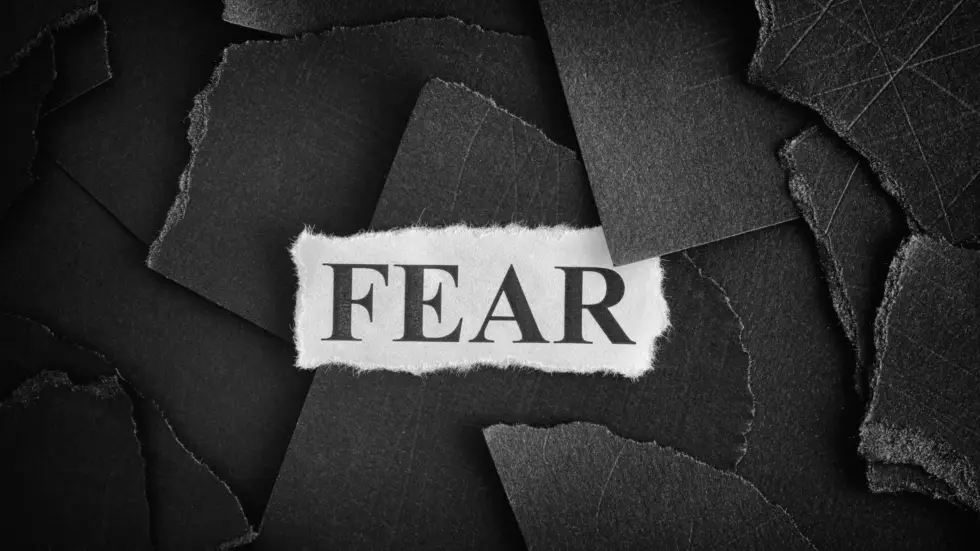Fear, one of our primal emotions, has evolved over millions of years to shape our survival instincts. It’s an intricate sensation that can propel us into action or leave us paralyzed. From triggering a surge of strength to inducing irrational thoughts, fear’s effects on our minds are both fascinating and complex. In this article, we embark on a journey to understand the science behind what happens in our brains when fear takes hold.
Fear’s Deep-Seated Origins:
Deep within the essence of every living being, there lies a powerful and primitive feeling that has shaped life on Earth for millions of years – fear. It’s an emotion so fundamental that it crosses the boundaries between species, affecting nearly every creature you can think of, from the tiny snail hiding in its shell at the hint of danger to humans, who can experience fear in complex and profound ways.
This reaction, fear, isn’t just a simple emotion; it’s an evolutionary tool, deeply woven into the fabric of our being, designed to protect us. When our distant ancestors encountered a predator, it was fear that surged through their bodies, making their hearts race and muscles tense, readying them to either fight for their lives or run as fast as they could. This fight or flight response is a testament to fear’s deep-seated origins, showing us that fear has always been about survival.
Fear manifests in various intensities and forms across the animal kingdom. For instance, a snail might only exhibit a quick withdrawal into its shell, a simple and direct response to danger. Meanwhile, humans, with our intricate brains, can feel a range of fears, from the slight nervousness you get before speaking in public to the debilitating terror of a phobia that can grip someone’s entire life. This shows how multifaceted fear can be, highlighting its role not just in immediate survival but in affecting our behavior and decisions in complex ways.
Moreover, the ability to feel and learn from fear has been so crucial in the evolutionary story of life on Earth that it has persisted and evolved across millennia, becoming an intrinsic part of how all creatures interact with their environment. Every shiver down your spine, every moment of panic when you think you’re in danger, is a reminder of this ancient lineage of fear that we all share.
In understanding the origins and purpose of fear, we see it not just as an emotion to overcome or suppress, but as a fundamental aspect of our existence that connects us to the living world in a profound way. Fear, in its essence, is a reminder of our instincts to survive and protect ourselves, showcasing its deep-rooted significance in the vast tapestry of life.
The Body’s Dynamic Response:
When we face danger or feel threatened, it’s like our body suddenly becomes a highly skilled conductor, leading an intricate orchestra of reactions to get us ready for whatever comes next. This isn’t just a simple change; it’s a complex, coordinated effort involving many different parts of our bodies working together in perfect harmony.
First off, our heart rate starts to climb, pumping blood faster and more forcefully throughout our body. This isn’t happening just to make us feel nervous; it’s our body’s way of ensuring that our muscles get a speedy delivery of the oxygen and nutrients they need to spring into action.
Meanwhile, our bloodstream gets a powerful boost of adrenaline, a natural chemical our bodies produce in high-stress situations. Adrenaline is like the ultimate energy drink, but without the bottle. It flows through us, waking up our muscles and sharpening our senses, all to make us faster, stronger, and more alert. This rush enables us to perform remarkable feats, like running faster than we thought possible or jumping higher in moments of urgency.
And then there are the goosebumps. You might wonder what these tiny bumps have to do with dealing with danger. Believe it or not, they’re part of this whole amazing response system too. Back in the days of our distant ancestors, getting goosebumps made their body hair stand up, which made them look bigger and more intimidating to enemies or predators. While we might not need to look more formidable nowadays, our bodies still keep up this quirky habit, a reminder of where we’ve come from and how we’ve evolved.
Every piece of this response puzzle – the racing heart, the surging blood flow, the adrenaline, and even the goosebumps – has been fine-tuned by centuries of evolution. They all work together to give us a fighting chance against threats, equipping us with the physical power and quick wits to face dangers head-on. It’s truly amazing how our bodies can perform this dynamic response, getting us ready to tackle whatever challenges come our way.
Unique Human Facets:
We’ve already determined that humans are incredibly complex creatures, especially when it comes to how we react to fear. Fear is not just about jumping out of the way when something scares us. It goes much deeper than that. Our reactions to fear can be triggered by things that don’t immediately threaten our physical safety. For instance, simply reading about a dangerous situation or hearing someone warn us about a potential threat can make our hearts beat faster and our palms sweat. This shows just how powerful our minds are.
Consider seeing a Caution sign while walking. It doesn’t just make us look around more carefully; it immediately puts us on high alert, making us more aware of our surroundings. Or, imagine hearing a warning about a possible flood in your area. It’s not just a piece of information; it prompts us to think about what steps we should take to ensure our safety, like planning an escape route.
These examples highlight an intricate connection between our thoughts and our feelings. Our brains don’t just process information; they also generate emotional responses based on that information. This is what sets us apart and makes the human experience so rich and varied. The way our mind engages with our emotions in response to fear is a testament to the incredible complexity of human psychology. It’s a fascinating aspect of our nature, showing just how intertwined our cognitive processes and emotional responses really are.
A Glimpse Inside Our Brains:
Imagine your brain as a high-tech control room, bustling with activity, where messages zoom back and forth like emails in a busy inbox. In this complex system, one tiny but mighty player often steals the spotlight – the amygdala. This small cluster of cells is your body’s alarm system, sitting on alert to protect you from danger.
The Role of the Amygdala
When something scares you, the amygdala jumps into action. Think of it as pressing a big red button that says, Emergency! This action triggers what’s known as the fight or flight response. Your body decides in a split second whether to stand your ground and confront the threat (fight) or to run away to safety (flight).
But how does your body prepare for either of these actions? The amygdala is the conductor of this chaotic orchestra, signaling the release of stress hormones. These hormones act like messengers, telling different parts of your body to get ready for action. Your pupils widen, letting in more light, so you can see better. Your heart pounds faster, pumping blood to your muscles, making you ready to sprint or defend yourself. At the same time, blood is redirected from less critical functions, like digestion, to areas where it’s needed most.
The Role of the Hypothalamus
Collaborating closely with the amygdala is another crucial player – the hypothalamus. This brain region helps in sending out the chemicals that our body needs to respond to the danger. Together, the amygdala and the hypothalamus are like a well-rehearsed duo, coordinating their efforts to ensure you can react swiftly and effectively to any threat.
So, next time you jump at a loud noise or feel your heart racing when you watch a scary movie, you can thank your amygdala for doing its job. This tiny cluster of nuclei is constantly working to keep you safe, preparing your body to react swiftly whenever it detects a threat. It’s fascinating how a part of our brain so small can have such a huge impact on our survival.
The Balancing Act:
Fear, as we’ve learned, acts as both our protector and guide. Imagine it like a surging tide, unpredictable and powerful, yet our brains, equipped with their own control systems, skillfully manage this tide. The hippocampus steps in, distinguishing genuine threats from perceived ones. It cooperates with the amygdala, applying the brakes if a situation isn’t as dire as initially thought. This teamwork prevents us from being in a constant state of panic and enables us to assess situations with a clearer head.
The interplay between our instinctive reactions and our ability to reason through fear is akin to a finely choreographed dance. It’s a balancing act that ensures our reactions are tailored to the actual level of threat, not just our first impressions. This is crucial because reacting too strongly to a non-threatening situation can be just as dangerous as not reacting enough to a real danger.
In summary, fear, though often viewed as a negative emotion, plays a critical and complex role in our lives. It drives us to protect ourselves and assess dangers, balancing between automatic instincts and conscious choices. This powerful mechanism not only safeguards our well-being but also equips us with the ability to face the unknown with a sense of preparedness and resilience.
Start Therapy for Managing Fear in New Bern, NC
Remember that fear is a natural emotion and can be managed. You don’t have to be stuck in flight or fight. Our therapists can teach you how to manage fear responses and not let them consume you. We believe that you deserve it. Get started with therapy at our counseling practice in New Bern, NC with these steps:
1. Fill out this consult form.
2. Read about our skilled therapists.
3. Begin living a life with less anxiety and more joy!
Other Services at Renewed Wellness
At our New Bern, NC-based therapy practice, we offer more than just therapy for fear. Our therapists specialize in chronic illness counseling and addiction counseling. For those going through a life change, we also offer life transitions counseling. Let’s work together to get you to a good place!








